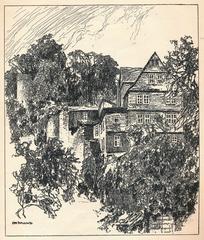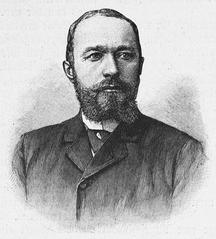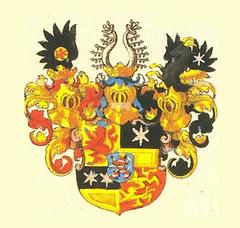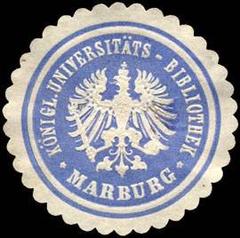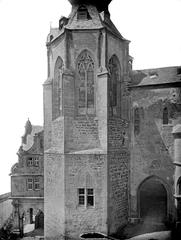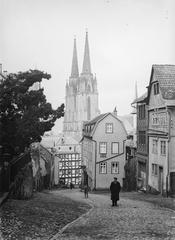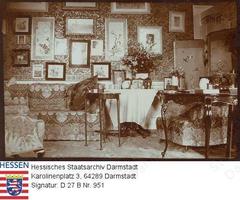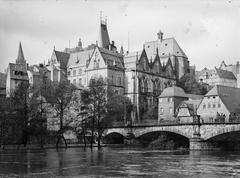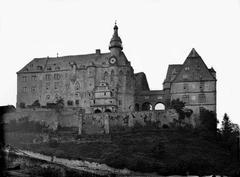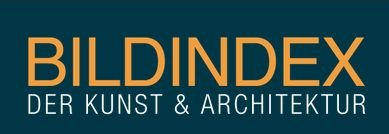
Deutsches Dokumentationszentrum Für Kunstgeschichte Bildarchiv Foto Marburg
Visiting Deutsches Dokumentationszentrum Für Kunstgeschichte – Bildarchiv Foto Marburg: Tickets, Hours, and Visitor Guide
Date: 14/06/2025
Introduction
The Deutsches Dokumentationszentrum für Kunstgeschichte – Bildarchiv Foto Marburg (DDK) is one of Europe’s foremost archives for art and architectural history. Located in Marburg, Germany, and established in 1913 at Philipps-Universität Marburg, the DDK has grown from a pioneering photographic department to an internationally recognized cultural institution. Today, it preserves approximately 2.2 million photographic items, including rare glass plate negatives, medium format, and digital images—offering an unparalleled chronicle of European art and architecture from antiquity to the present (uni-marburg.de, wissenschaftliche-sammlungen.de).
Central to the DDK’s mission is the Bildindex der Kunst und Architektur (Marburg Picture Index), an open-access online database. As of June 2025, it hosts over 3.2 million photographs and documents nearly 1.9 million artworks and architectural objects, reflecting the archive’s commitment to accessibility and digital innovation (Wikipedia: Marburg Picture Index).
Visitors enjoy free admission and accessible facilities, with guided tours available for deeper engagement. The DDK also supports public education through workshops, colloquia, and open-access initiatives, making it a vital resource for researchers and cultural enthusiasts alike. Marburg itself enhances the visit with its wealth of historical sites, such as the Landgrave Castle and the Old Botanical Garden (uni-marburg.de, dgph.de).
Contents
- History and Institutional Development
- Collections and Digital Resources
- Visiting Information: Hours, Tickets, and Accessibility
- Special Events, Educational Programs, and Research Initiatives
- Ethical Use, Open Access, and Cultural Sensitivity Guidelines
- Marburg: Nearby Attractions and Travel Tips
- Frequently Asked Questions (FAQ)
- Summary and Visitor Tips
- Contact and Further Reading
History and Institutional Development
Origins and Growth
Founded in 1913, the DDK began as a photographic department at Philipps-Universität Marburg with a mission to systematically document European art and monuments. Early photographic campaigns, dating back to the 1870s, sought to preserve images of endangered works using glass plate and later medium format negatives (uni-marburg.de, wissenschaftliche-sammlungen.de).
Over the 20th century, the archive expanded its scope, acquiring additional collections from publishers and photographers, safeguarding visual records at risk of loss. It became a key national and international hub for art historical documentation and research.
Digital Transformation
The launch of the Bildindex der Kunst und Architektur was a milestone in making the archive’s holdings accessible worldwide. Digitization began with microfiche in the late 20th century, followed by large-scale digital conversion. By June 2025, the Bildindex database features over 3.2 million photographs, including contributions from 90 partner institutions (Wikipedia: Marburg Picture Index).
Collections and Digital Resources
Collection Scope
The DDK houses about 2.2 million original photographs, negatives, diapositives, and digital images, some dating back to 1860. Its collection spans European—and some non-European—art and architecture, with highlights including rare images of monuments and artworks that have since been altered or lost. The 2016 acquisition of Rolf H. Krauss’s library, for example, added rare photo books and original photographs to the archive (fffrankfurt.com).
Digital Access
The Bildindex der Kunst und Architektur provides free online access to over 1.2 million catalogued images, searchable by artist, region, period, and more. The platform supports multiple languages and integrates with international cultural heritage databases.
Ongoing Expansion
Partnerships with over 80 institutions ensure continual growth, with new digital assets and research data regularly added.
Visiting Information: Hours, Tickets, and Accessibility
- Location: Biegenstraße 11, 35037 Marburg, Germany (main archive). Research building at Pilgrimstein 14.
- Opening Hours: Monday to Friday, 9:00 AM – 5:00 PM. Closed weekends and public holidays.
- Admission: Free for all visitors. Researchers should book appointments for access to specialized materials.
- Guided Tours: Available upon request; advance booking is encouraged (uni-marburg.de).
- Accessibility: The facility is fully wheelchair accessible, with staff support available for visitors with special needs.
- Photography: Permitted in designated areas; flash/tripod use requires approval.
Contact:
- Email: [email protected]
- Phone: +49 6421 28-23600
- Website: www.fotomarburg.de
Special Events, Educational Programs, and Research Initiatives
Events and Programs
The DDK hosts regular workshops, public lectures, and exhibitions on topics such as image archiving, preservation, and art history. The annual “Studientage für Fotografie” brings together international scholars and students. In 2025, the event runs from July 29 to August 2, featuring exhibitions and seminars (dgph.de).
Academic and Public Engagement
The DDK collaborates closely with Philipps-Universität Marburg, offering university courses, seminars, and interdisciplinary workshops. Programs like “Kulturtechniken des Zeigens” and themed public lectures further support student and community engagement (uni-marburg.de).
Research Initiatives
The archive supports interdisciplinary research in art history and digital humanities, participating in international projects and providing open access resources for global scholarship. The new research building, opened in 2024, features state-of-the-art storage and public reading rooms (uni-marburg.de).
Ethical Use, Open Access, and Cultural Sensitivity Guidelines
Open Access Policy
In January 2025, DDK expanded its open access policy, making over 1.2 million images available under Creative Commons licenses (docma.info). Users are encouraged to credit “Bildarchiv Foto Marburg” and adhere to indicated licensing terms.
Responsible Use
- Use images respectfully and accurately, with proper attribution.
- Observe copyright restrictions for images not in the public domain.
- Consult staff when using materials of religious, spiritual, or colonial significance.
Cultural and Provenance Awareness
The archive is committed to transparency regarding the origins and histories of its collections and supports provenance research. Users should handle culturally sensitive materials thoughtfully and avoid perpetuating colonial narratives.
Marburg: Nearby Attractions and Travel Tips
Marburg is a city rich in history and culture, making it an ideal complement to a visit to the DDK:
- Landgrafenschloss (Marburg Castle): Offers panoramic views and centuries of history.
- Old Botanical Garden: A tranquil space for nature lovers.
- St. Elizabeth’s Church and Old Town: Explore medieval streets and vibrant city life.
Getting There:
Marburg is easily accessible via regional trains and is well connected by car. Public transportation links the archive to the city’s main attractions.
Frequently Asked Questions (FAQ)
Q: Are there any fees or tickets required to enter the DDK?
A: Admission is free. Researchers are advised to book appointments for archive access.
Q: What are the opening hours?
A: Monday to Friday, 9:00 AM – 5:00 PM. Closed on weekends and public holidays.
Q: Is the archive accessible for people with disabilities?
A: Yes, the facility is fully accessible. Contact staff for specific accommodations.
Q: Can I take photographs onsite?
A: Photography is permitted in designated areas, with some restrictions. Please seek approval for flash or tripod use.
Q: How do I access the digital collections?
A: Visit the Bildindex der Kunst und Architektur.
Q: What guidelines apply for ethical use and licensing?
A: Most images are available under open licenses. Always credit “Bildarchiv Foto Marburg” and check for any specific copyright notices.
Summary and Visitor Tips
The Deutsches Dokumentationszentrum für Kunstgeschichte – Bildarchiv Foto Marburg serves as a cornerstone in the preservation and dissemination of European art history. Its vast photographic archive, dynamic digital resources, and robust educational programs make it an invaluable resource for scholars, students, and cultural tourists alike. The archive’s commitment to open access, responsible stewardship, and inclusivity ensures that Europe’s rich visual heritage remains accessible for generations to come.
Whether visiting in person or exploring online, plan ahead to make the most of your experience. Take advantage of guided tours, educational events, and Marburg’s historic surroundings for a truly enriching visit.
Contact and Further Reading
- Visiting Bildarchiv Foto Marburg: Hours, Tickets, and Exploring Marburg’s Historical Art Archive, 2025
- Visiting and Exploring the Deutsches Dokumentationszentrum für Kunstgeschichte – Bildarchiv Foto Marburg: Collections, Digital Resources, and Visitor Information, 2025
- Discover the Deutsches Dokumentationszentrum für Kunstgeschichte (DDK) in Marburg: Visiting Hours, Tickets, and Programs for Art and History Enthusiasts, 2025
- Visiting Bildarchiv Foto Marburg: Access, Ethical Use, and Cultural Guidelines, 2025
- Marburg Picture Index, 2025
- Visit of the Bildarchiv Foto Marburg, 2024
- Studientage für Fotografie 2025, 2025
- Many images of Bildarchiv Foto Marburg now free to use - but…, 2025


